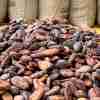Rapid urbanisation of Chennai Metropolitan Area will shrink waterbodies, reduce groundwater recharge potential, says study
The Hindu
Anna Univ. study finds urbanisation in Chennai Metro Area to reduce agricultural lands, waterbodies, and groundwater recharge potential in next 4 decades. Built-up area to increase from 656 sq.km in 2021 to 864 sq.km by 2101. Agricultural lands to drop from 346 sq.km to 289 sq.km by 2051. Waterbodies to decrease from 153 sq.km (13%) to 145 sq.km (10%) by 2101. Measures needed to balance urbanisation, such as protecting lake boundaries, promoting rainwater harvesting, etc.
In the next four decades, tremendous changes in land use and increase in built-up area in the Chennai Metropolitan Area (CMA) will not only shrink agricultural lands and waterbodies but also have an adverse impact on groundwater recharge potential in urban pockets, says a study by Anna University, carried out in collaboration with Indian Institute of Technology-Madras (IIT-M).
The study has forecast that the built-up area, which covered 656 sq.km in the CMA in 2021, will increase to 688 sq.km by 2031, 718 sq.km in 2041, and 750 sq.km by 2051. The study on ‘Forecasting Land Use/Cover Changes and their Influence on Groundwater Recharge in Chennai’ was done over a total study area of 1,207 sq.km of the CMA.
By the end of 2101, the total built-up area has been forecast to increase to 864 sq.km., which would be 72% of the total area of the CMA. This will mean a sharp decline in agricultural lands, which will be replaced by built-up area. The extent of agricultural land will drop from the current 346 sq.km to 289 sq.km by 2051. The expansion of urban areas and increasing demand for infrastructure will also lead to shrinking waterbodies and the destruction of vegetation.
P.S. Razi Sadath, who co-authored the study with M. Rinisha Kartheeswari and L. Keerthan, said the availability of waterbodies will drop from the present 153 sq.km (13%) of the CMA to 152 sq.km in 2031, and to 145 sq.km by 2051. The extent of waterbodies will decrease to 10% of the total area of the CMA by 2101.
The expanse of the CMA will grow up to Melmaruvathur and Cheyyur at one end and Pulicat to the north in the next five decades. If the urban expansion remains unchecked, the city will face multiple challenges – cycles of droughts and floods, seawater intrusion, groundwater depletion, and increased prevalence of urban heat islands.
The study, which was supported by the Department of Science and Technology and published in Urban Water Journal, was carried out by integrating geographic information system, remote sensing, and Land Change Modeler to forecast future trends based on studies and maps between 2005 and 2021.
L. Elango, the study’s author and visiting faculty, IIT-M, said the city’s potential to recharge groundwater would also be hit as the city grows further over the decades. Regions with very high potential for groundwater recharge would reduce by 30% by the end of the century. Areas in the southern coastal aquifer region like East Coast Road, Chembarambakkam catchment area, Melmaruvathur, and Thirukazhukundram region will turn into low groundwater potential areas. The urbanisation, combined with demand and over extraction, will reduce land availability for recharge, increase surface runoff, and exacerbate depletion of groundwater resources.













